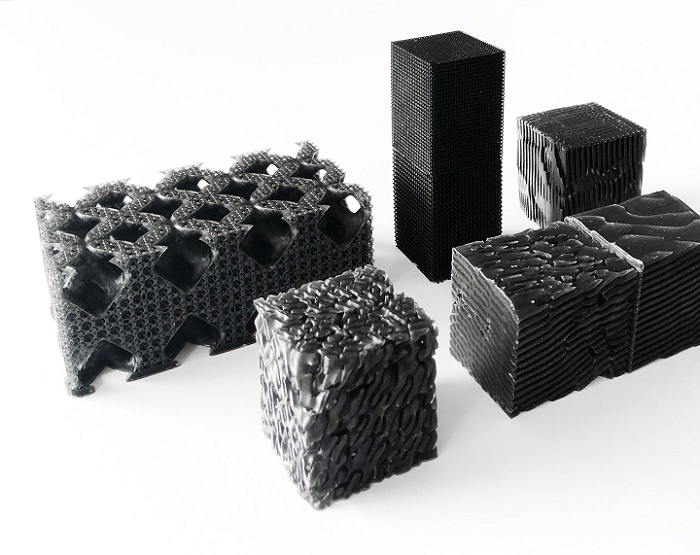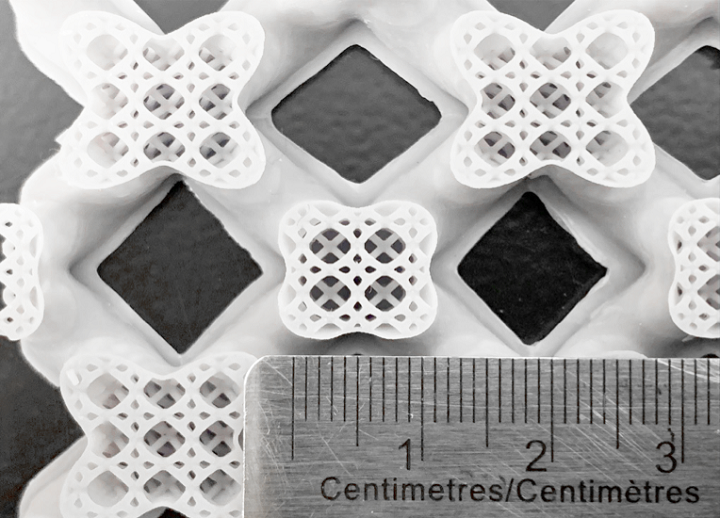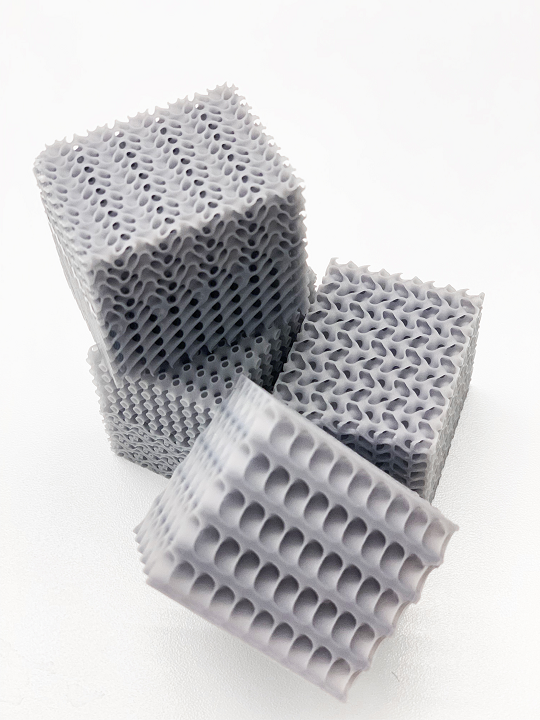Geometric consulting firm MESH Consultants, based out of Toronto, was founded in 2012 to help artists, architects, designers, entrepreneurs, and scientists figure out how to turn their geometrically challenging project ideas into reality. The mathematical consultancy consults with its clients on all things geometric, in addition to conducting research projects, creating algorithms, building software, and running simulations. As you likely know, one of the major advantages that 3D printing has over more traditional forms of manufacturing is the ability to fabricate complex geometries, so it makes sense that the firm’s new spin-off company, Metafold, is specializing in the large-scale 3D printing of highly challenging geometry, such as high-surface-area lattice structures.
“Metafold’s 3D printing technology lets you print scale-defying geometry like lattices, microstructures and metamaterials,” the startup’s website states. “High resolution, pixel-perfect prints with stunning complexity in unprecedented print volumes.”
Fittingly, Metafold uses advanced mathematics in the creation of its novel, patent-pending, DLP-based 3D printing method, called LightCycle. The startup says that its GPU-leveraged geometry engine is able to print down to a 35 micron resolution, with a maximum build volume of over one-thousand cubic inches; as such, MESH Consultants says that the new company can print complex geometries that other printers are unable to achieve.
“Metafold’s 3D printing technology takes a fundamentally different approach to geometric complexity, which unlocks surprising detail in unprecedented print volumes and high resolution. This creates an accelerated and accessible development process for metamaterials,” explained Metafold’s CTO Daniel Hambleton.
A lattice geometry features one geometric motif that repeats in a pattern in order to fill space, and mathematically engineered materials like these structures are known as metamaterials. Lattice structures are strong yet lightweight, with compressive properties, and are used in applications for many industries, such as aerospace, bioprinting, athletic equipment, and even nasal swabs during the ongoing COVID-19 pandemic.
Metafold says that a “computational bottleneck” has occurred due to the difficulties involved with “digitally representing” these kinds of challenging geometries, along with increasing the complications of applying metamaterials at scale. While the new startup does work with more widely used 3D printing materials, such as ceramics, metals, and polymers, its technology allows Metafold to reach new material spaces by controlling the geometry of the objects it prints, with a specific focus on lattices.
“As mathematicians working in the design and manufacturing industries, we have seen first-hand how time-consuming and challenging it is to design, print, and test when working with lattice geometry and metamaterials,” said Metafold CEO Dr. Elissa Ross. “We believe our new approach to this problem will facilitate printing at the frontiers of scientific discovery and industrial advancements.”
Metafold offers lattice design tools that it says are easy and quick to use, with the ability to add and subtract beams, import assets, fit to a shape, and apply functional grading, and the renderer shows you just what you’re going to be printing. Additionally, LightCycle’s meshless workflow, with real-time slicing, is said to help users print faster by working directly with their design parameters, data streams, and lattice specifications.
The startup’s LightCycle hardware includes data-driven meshless 3D printing software, and comes in three standard sizes:
- 100 X 150 X 175 mm LightCycle
- 325 X 150 X 175 mm LightCycle 2
- 325 X 300 X 175 mm LightCycle 2X
(Source/Images: Metafold)
Subscribe to Our Email Newsletter
Stay up-to-date on all the latest news from the 3D printing industry and receive information and offers from third party vendors.
You May Also Like
3D Printing Financials: Fathom Struggles in Financial Quicksand During Critical Transition
Facing a year of key transitions and financial pressures, Fathom (Nasdaq: FTHM) has filed its annual report for 2023 with the U.S. Securities and Exchange Commission (SEC). The document outlines...
Latest Earnings Overview for Australian 3D Printing Firms Titomic and AML3D
Australian 3D printing manufacturing firms Titomic (ASX: TTT) and AML3D (ASX: AL3) reported their financial results for the period from July to December 2023, marking the first half of their...
3D Printing Webinar and Event Roundup: April 7, 2024
Webinars and events in the 3D printing industry are picking back up this week! Sea-Air-Space is coming to Maryland, and SAE International is sponsoring a 3D Systems webinar about 3D...
3D Printing Financials: Unpacking Farsoon and BLT’s 2023 Performance
In the Chinese 3D printing industry, two companies, Farsoon (SHA: 688433) and Bright Laser Technologies, or BLT (SHA: 688333), have recently unveiled their full-year earnings for 2023. Farsoon reported increases...



































